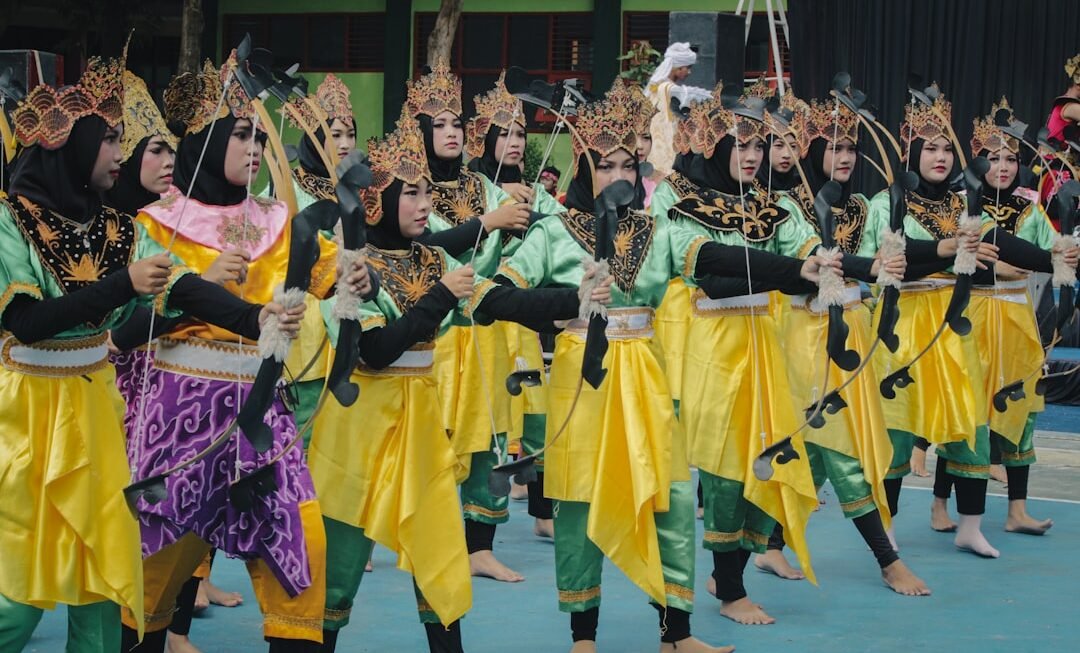In the evolving landscape of education, the terms synchronous and asynchronous learning have gained prominence, particularly with the rise of online education. Synchronous classes refer to learning experiences that occur in real-time, where instructors and students engage simultaneously, often through video conferencing platforms. This format allows for immediate interaction, fostering a dynamic environment where questions can be posed and answered on the spot.
Conversely, asynchronous classes provide flexibility, allowing students to access materials, lectures, and assignments at their convenience. This approach caters to diverse learning styles and schedules, enabling learners to engage with content at their own pace. The choice between synchronous and asynchronous learning is not merely a matter of preference; it reflects broader pedagogical philosophies and the needs of diverse student populations.
As educational institutions increasingly adopt hybrid models that incorporate both formats, understanding the nuances of each becomes essential. The effectiveness of these learning modalities hinges on various factors, including the nature of the subject matter, the goals of the course, and the characteristics of the student body. As we delve deeper into the distinctions between these two approaches, we will explore how collaboration plays a pivotal role in enhancing the learning experience in both synchronous and asynchronous settings.
Understanding the Differences between Synchronous and Asynchronous Learning
Synchronous learning is characterized by its immediacy and interactivity. In this format, students participate in live classes where they can engage directly with instructors and peers. This real-time interaction can take place through various mediums such as video calls, live chats, or interactive webinars.
The immediacy of synchronous learning fosters a sense of community among participants, as they share experiences and insights in real-time. For instance, a live discussion in a synchronous class can lead to spontaneous debates and collaborative problem-solving that enriches the learning experience. On the other hand, asynchronous learning offers a different set of advantages.
Students can access course materials at any time, allowing them to learn at their own pace. This flexibility is particularly beneficial for those balancing work, family commitments, or other responsibilities alongside their studies. Asynchronous courses often utilize discussion boards, recorded lectures, and pre-set deadlines for assignments, enabling students to engage with content when it suits them best.
This format encourages self-directed learning and critical thinking, as students must take initiative to manage their time effectively and seek out resources independently.
Importance of Collaboration in Synchronous Classes
Collaboration in synchronous classes is vital for creating an engaging and interactive learning environment. When students participate in live discussions or group activities, they benefit from immediate feedback and diverse perspectives. This collaborative atmosphere not only enhances understanding but also fosters a sense of belonging among students.
For example, in a synchronous science class, students might work together in breakout rooms to solve complex problems or conduct virtual experiments. Such collaborative tasks encourage peer-to-peer learning and help students develop essential communication skills. Moreover, synchronous collaboration can lead to deeper engagement with course material.
When students discuss concepts in real-time, they are more likely to ask questions and clarify misunderstandings on the spot. This dynamic interaction can spark curiosity and motivate students to explore topics further. In addition, instructors can facilitate group discussions that challenge students to think critically and articulate their thoughts clearly.
The immediacy of feedback during these interactions can significantly enhance the learning experience, making it more impactful than solitary study.
Importance of Collaboration in Asynchronous Classes
While asynchronous classes lack real-time interaction, collaboration remains a crucial element for fostering a rich learning experience. In this format, collaboration often takes place through discussion forums, group projects, or peer review activities that allow students to engage with one another asynchronously. This type of collaboration encourages students to articulate their thoughts in writing, which can lead to more thoughtful contributions compared to spontaneous verbal exchanges in synchronous settings.
For instance, a student may take time to research and reflect on their response before posting it in a discussion forum, resulting in more substantive dialogue. Additionally, asynchronous collaboration allows for diverse participation from students who may feel hesitant to speak up in live settings. Some learners thrive in environments where they can take their time to formulate responses without the pressure of immediate feedback.
This inclusivity can lead to richer discussions as students from various backgrounds contribute unique perspectives. Furthermore, asynchronous collaboration enables learners to connect across different time zones or geographical locations, broadening their understanding of global issues and fostering a sense of community that transcends physical boundaries.
Strategies for Fostering Collaboration in Synchronous Classes
To maximize collaboration in synchronous classes, educators can implement several strategies that promote active participation and engagement among students. One effective approach is the use of breakout rooms during live sessions. By dividing students into smaller groups for discussions or collaborative tasks, instructors can create an intimate setting that encourages participation from all members.
For example, after presenting a new concept, an instructor might assign groups to brainstorm applications of that concept in real-world scenarios. This not only fosters collaboration but also allows students to learn from one another’s insights. Another strategy involves incorporating interactive tools such as polls or quizzes during live sessions.
These tools can serve as icebreakers or check-ins that encourage student involvement while providing immediate feedback on their understanding of the material. Additionally, instructors can facilitate whole-class discussions by posing open-ended questions that invite diverse viewpoints. By creating a safe space for sharing ideas and encouraging respectful debate, educators can cultivate an environment where collaboration flourishes.
Tools and Technologies for Collaboration in Synchronous Classes
The integration of technology plays a significant role in enhancing collaboration within synchronous classes. Platforms like Zoom or Microsoft Teams offer features such as screen sharing, breakout rooms, and chat functions that facilitate real-time interaction among participants. For instance, educators can use screen sharing to present visual aids or collaborative documents while engaging students in discussion about the content being displayed.
This visual component can enhance understanding and retention of information. Additionally, collaborative tools like Google Docs or Padlet allow students to work together on projects during live sessions. These platforms enable multiple users to edit documents simultaneously, fostering a sense of teamwork as students contribute ideas in real-time.
Furthermore, using interactive whiteboards during synchronous classes can encourage brainstorming sessions where all participants can contribute their thoughts visually. By leveraging these technologies effectively, educators can create an engaging collaborative environment that enhances the overall learning experience.
Strategies for Fostering Collaboration in Asynchronous Classes
In asynchronous classes, fostering collaboration requires intentional design and structure to encourage student engagement over time. One effective strategy is to create structured discussion prompts that require students to respond thoughtfully and engage with their peers’ contributions. For example, an instructor might pose a question related to course content that necessitates students to reference readings or research before posting their responses.
This approach not only encourages critical thinking but also promotes deeper engagement with the material. Another strategy involves implementing peer review processes for assignments or projects. By having students provide feedback on each other’s work asynchronously, they develop critical evaluation skills while also learning from their peers’ perspectives.
This collaborative approach not only enhances individual understanding but also builds a sense of community as students interact with one another’s ideas and contributions.
Tools and Technologies for Collaboration in Asynchronous Classes
The digital landscape offers numerous tools that facilitate collaboration in asynchronous classes. Learning management systems (LMS) like Canvas or Moodle provide discussion forums where students can post responses and engage with their peers over time. These platforms often include features such as threaded discussions that allow for organized conversations around specific topics or questions.
Additionally, collaborative platforms like Trello or Slack can be utilized for group projects or ongoing discussions outside of formal class hours. These tools enable students to communicate effectively while managing tasks collaboratively. For instance, Trello allows teams to create boards for project management where members can assign tasks, set deadlines, and track progress collectively.
By utilizing these technologies thoughtfully, educators can create an engaging asynchronous environment that fosters collaboration among students.
Overcoming Challenges in Fostering Collaboration in Synchronous Classes
Despite the benefits of collaboration in synchronous classes, several challenges may arise that hinder effective engagement among students. One common issue is the dominance of certain voices during discussions, which can stifle participation from quieter individuals. To address this challenge, instructors can implement strategies such as rotating facilitators within small groups or using structured protocols for discussions that ensure everyone has an opportunity to contribute.
Another challenge is managing technology-related issues that may disrupt the flow of collaboration during live sessions. Connectivity problems or unfamiliarity with tools can lead to frustration among participants. To mitigate these challenges, educators should provide clear instructions on using technology before class sessions and offer technical support when needed.
Additionally, establishing norms for online etiquette can help create a respectful environment where all participants feel comfortable sharing their thoughts.
Overcoming Challenges in Fostering Collaboration in Asynchronous Classes
Asynchronous classes present their own set of challenges when it comes to fostering collaboration among students. One significant hurdle is maintaining student motivation and engagement over extended periods without real-time interaction. To combat this issue, instructors can implement regular check-ins or deadlines that encourage consistent participation throughout the course duration.
Another challenge is ensuring equitable participation among all students in asynchronous discussions. Some learners may dominate conversations while others remain silent due to various factors such as confidence levels or time constraints. To promote equity in participation, educators can establish guidelines for discussion contributions that encourage all voices to be heard while providing opportunities for quieter students to share their thoughts through alternative formats such as video responses or written reflections.
Conclusion and Future Trends in Fostering Collaboration in Synchronous and Asynchronous Classes
As educational practices continue to evolve with advancements in technology and changing learner needs, fostering collaboration will remain a critical focus for both synchronous and asynchronous classes. The future may see an increased integration of artificial intelligence tools that facilitate personalized learning experiences while promoting collaborative interactions among peers. Moreover, hybrid models that blend synchronous and asynchronous elements are likely to become more prevalent as institutions seek to provide flexible yet engaging learning environments for diverse student populations.
By embracing innovative strategies and leveraging technology effectively, educators can create collaborative spaces that enhance student engagement and foster meaningful connections within both synchronous and asynchronous contexts. In summary, understanding the distinctions between synchronous and asynchronous learning is essential for educators aiming to foster collaboration effectively within their classrooms. By implementing targeted strategies and utilizing appropriate tools tailored to each format’s unique characteristics, educators can create enriching learning experiences that empower students to collaborate meaningfully regardless of when or how they engage with course content.












